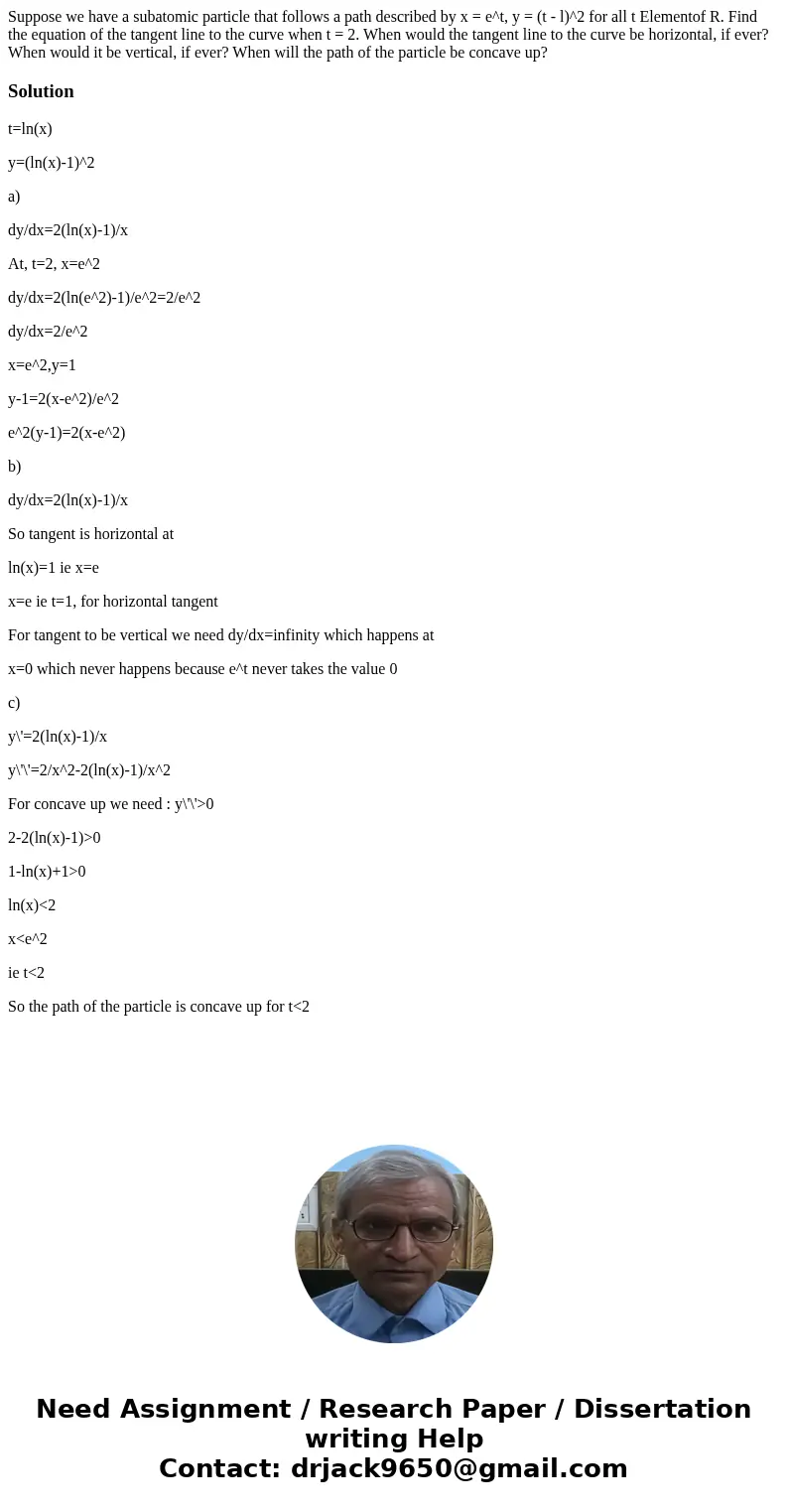Suppose we have a subatomic particle that follows a path des
Suppose we have a subatomic particle that follows a path described by x = e^t, y = (t - l)^2 for all t Elementof R. Find the equation of the tangent line to the curve when t = 2. When would the tangent line to the curve be horizontal, if ever? When would it be vertical, if ever? When will the path of the particle be concave up?
Solution
t=ln(x)
y=(ln(x)-1)^2
a)
dy/dx=2(ln(x)-1)/x
At, t=2, x=e^2
dy/dx=2(ln(e^2)-1)/e^2=2/e^2
dy/dx=2/e^2
x=e^2,y=1
y-1=2(x-e^2)/e^2
e^2(y-1)=2(x-e^2)
b)
dy/dx=2(ln(x)-1)/x
So tangent is horizontal at
ln(x)=1 ie x=e
x=e ie t=1, for horizontal tangent
For tangent to be vertical we need dy/dx=infinity which happens at
x=0 which never happens because e^t never takes the value 0
c)
y\'=2(ln(x)-1)/x
y\'\'=2/x^2-2(ln(x)-1)/x^2
For concave up we need : y\'\'>0
2-2(ln(x)-1)>0
1-ln(x)+1>0
ln(x)<2
x<e^2
ie t<2
So the path of the particle is concave up for t<2

 Homework Sourse
Homework Sourse